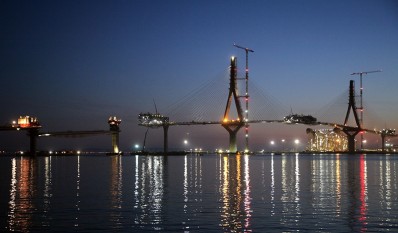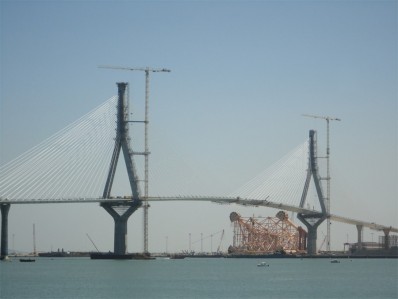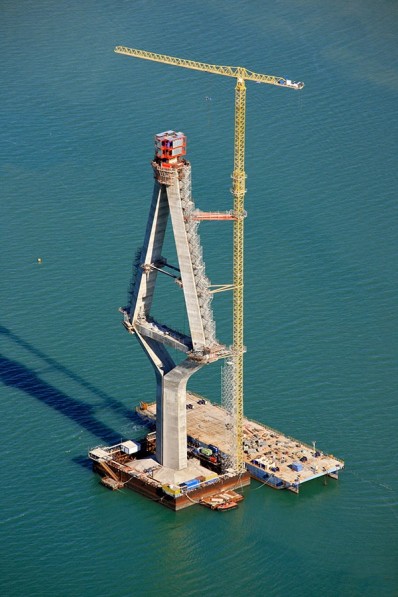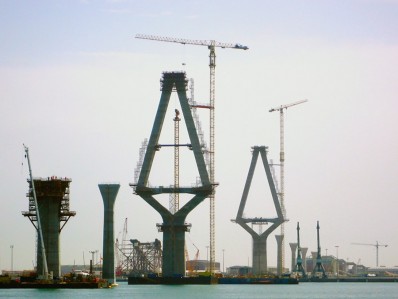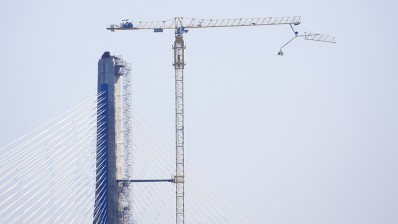Two 18 tonne 21LC400 tower cranes (currently the improved 20t 21LC450) worked for 8 years on the construction of the Puente de la Constitución de 1812 bridge. Commonly known as "Puente de la Pepa" or "La Pepa" bridge, this infrastructure connects the city of Cadiz and the town of Puerto Real, in Spain.
The main purpose of these cranes was to build the two enormous bridge pylons, 185 metres tall, one of which is located in the middle of the bay.
Key aspects of the La Pepa Bridge construction:
- The different sections and parts of the crane for the "La Pepa" bridge located in the middle of the bay were transported on barges. It was assembled with the help of a mobile crane located on a barge.
- The two cranes were jacked up with the hydraulic cage to a final height of 195.6 metres for the La Pepa bridge. Strong winds at this height made some of the work challenging.
- Only four ties were needed to ensure the stability of each crane during the La Pepa Bridge project.
- The 110 kW hoist motors allowed the cranes to efficiently work at high speeds throughout the La Pepa Bridge project.
- An unexpected change in the project planning required the Comansa engineering team to find a quick solution. To temporarily increase the load capacity of one of the cranes to 23 tonnes, the kinematics (pulleys, trolley/hook assembly, hoist cable, etc.) and the counterweights were reinforced.
- A jib section dismantling system was used to dismantle one of the cranes, reducing the span of the crane so it could slew without any interference, as well as dismantle the highest ties.
Opening of the "La Pepa" Bridge: 2015
Construction company: Dragados
Key partner: Eleva Grúas Torre, the company responsible for the crane assembly, dismantling and maintenance work.

